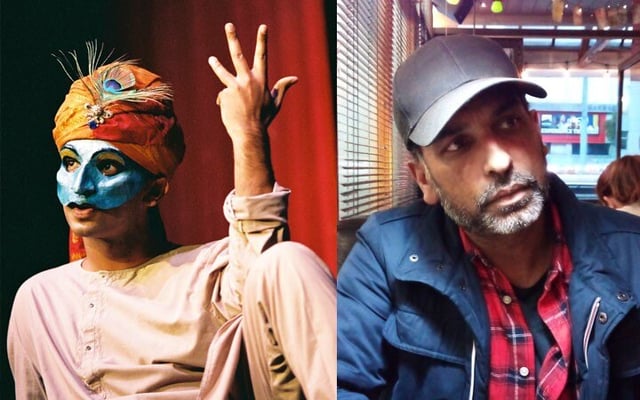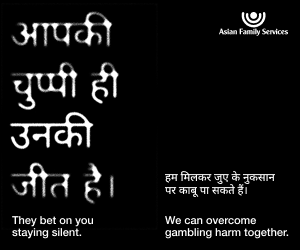Masks a must as Krishnan’s Dairy opens

To mark its 25th anniversary, Indian Ink is staging its debut play, Krishnan’s Dairy.
The theatre company, co-founded by Jacob Rajan, will tour Kapiti, Christchurch, Hamilton, Wellington and Auckland from June 9 to September 21.
The company is just back from a tour of Hawaii and Arizona in the US where it performed the play, Paradise or the Impermanence of Ice Cream.
Indian Ink’s complete oeuvre constitutes 11 plays. The company has notched 65 international tours so far.
Rajan has a busy calendar ahead. In May, he joins other high-profile performing artists to launch an exhibition of contemporary Indian Art in Aotearoa. The venue is the Tamaki Paenga Hira Auckland War Memorial Museum. In September, Rajan is set to lead a series of theatre workshops in Wellington.
Krishnan’s Dairy is the starting point of this long journey. The play captures the world of the ubiquitous corner shop, or dairy, which operates in the shadow of the glitzy supermarkets and symbolises the resilient immigrant entrepreneurial spirit.
It is a tale told through laughter and caricature, with masks amplifying the comedic element.
In contrast, the playwright in repose strikes a pensive note as he sheds light on his craft and articulates his compulsions as an artist holding up a mirror to his own immigrant community to keep his largely Western audiences in stitches.
“The majority of my audience is still a Western theatre-going audience,” Rajan admits. “Maybe 10 per cent is Indian.”
Rajan, the first Indian to graduate from the National Drama School in Wellington , says the reason his plays draw fewer Indians is that the community is well served by other art forms such as Indian classical dance and music.
“My plays are still greeted with suspicion by my own community because the Western theatrical form is not what they normally go to,” he says.
Rajan says his plays shine a light on a community that is “invisible, an unseen culture.”
“Indians prefer to keep their heads down, work hard and not draw attention to themselves,” Rajan explains. “But look underneath, there’s a vibrant, rich, amazing culture that Kiwis respond to.”
Despite their reticence, Rajan claims there is a sense of immense pride in seeing one of their own on stage.
But the wellspring of his plays is the Kiwi Indian community that he knew while growing up in New Zealand. He does not draw inspiration from mainland India, though his last play was set in Mumbai and dealt with the disappearance of vultures.
East meets West in Rajan’s work. The names of characters in his plays are taken from family members. But because he was raised in New Zealand, he views the diaspora through the lens of the South Pacific.
Predictably, the New Zealand theatre scene was not ready for the appearance of an Indian actor. Rajan realised early on that he would not find work if he waited for the phone to ring. “So I had to write plays to be able to perform. And performance is my first love,” Rajan says.
So does he write plays with himself in mind? “I did for a while,” he concedes. “But it became a really bad business model. If you only have plays with me in them, you can’t have more than one play out at a time. So we made a conscious business decision to write plays without me in them for a while so that we can have more than one play out in the world. This year we’ve achieved that. That’s enabled the business to grow and allowed more agility in what we do.”
But Indian Ink’s trade mark use of the mask as an ingenious device to heighten verisimilitude defines Rajan’s craft. He calls it the “conduit to the truth.”
Director Justin Lewis and Rajan toured Italy, Indonesia and India researching masks before settling on a version of their own. How an inanimate object such as a pair of dentures comes alive on stage is demonstrated by Rajan as he puts one inside his mouth and instantly transforms into Krishnan, the dairy owner.
The mask works by grabbing the audience by the scruff and drawing it to the core truth of a character. It does this by magnifying a facial feature and exaggerating a particular gesture.
This, of course, provokes laughter.” We call it the serious laugh,” Rajan explains. “Open their mouths with laughter in order to slip something serious in it.”
At first, the audience laughs at the characters (at their Indian accent), then laughs with the characters. Before the curtain drops, the audience is in love with the characters.
This is Indian Ink’s three-step process to discovering the humanity within you.

To mark its 25th anniversary, Indian Ink is staging its debut play, Krishnan’s Dairy.
The theatre company, co-founded by Jacob Rajan, will tour Kapiti, Christchurch, Hamilton, Wellington and Auckland from June 9 to September 21.
The company is just back from a tour of Hawaii and Arizona in the US...
To mark its 25th anniversary, Indian Ink is staging its debut play, Krishnan’s Dairy.
The theatre company, co-founded by Jacob Rajan, will tour Kapiti, Christchurch, Hamilton, Wellington and Auckland from June 9 to September 21.
The company is just back from a tour of Hawaii and Arizona in the US where it performed the play, Paradise or the Impermanence of Ice Cream.
Indian Ink’s complete oeuvre constitutes 11 plays. The company has notched 65 international tours so far.
Rajan has a busy calendar ahead. In May, he joins other high-profile performing artists to launch an exhibition of contemporary Indian Art in Aotearoa. The venue is the Tamaki Paenga Hira Auckland War Memorial Museum. In September, Rajan is set to lead a series of theatre workshops in Wellington.
Krishnan’s Dairy is the starting point of this long journey. The play captures the world of the ubiquitous corner shop, or dairy, which operates in the shadow of the glitzy supermarkets and symbolises the resilient immigrant entrepreneurial spirit.
It is a tale told through laughter and caricature, with masks amplifying the comedic element.
In contrast, the playwright in repose strikes a pensive note as he sheds light on his craft and articulates his compulsions as an artist holding up a mirror to his own immigrant community to keep his largely Western audiences in stitches.
“The majority of my audience is still a Western theatre-going audience,” Rajan admits. “Maybe 10 per cent is Indian.”
Rajan, the first Indian to graduate from the National Drama School in Wellington , says the reason his plays draw fewer Indians is that the community is well served by other art forms such as Indian classical dance and music.
“My plays are still greeted with suspicion by my own community because the Western theatrical form is not what they normally go to,” he says.
Rajan says his plays shine a light on a community that is “invisible, an unseen culture.”
“Indians prefer to keep their heads down, work hard and not draw attention to themselves,” Rajan explains. “But look underneath, there’s a vibrant, rich, amazing culture that Kiwis respond to.”
Despite their reticence, Rajan claims there is a sense of immense pride in seeing one of their own on stage.
But the wellspring of his plays is the Kiwi Indian community that he knew while growing up in New Zealand. He does not draw inspiration from mainland India, though his last play was set in Mumbai and dealt with the disappearance of vultures.
East meets West in Rajan’s work. The names of characters in his plays are taken from family members. But because he was raised in New Zealand, he views the diaspora through the lens of the South Pacific.
Predictably, the New Zealand theatre scene was not ready for the appearance of an Indian actor. Rajan realised early on that he would not find work if he waited for the phone to ring. “So I had to write plays to be able to perform. And performance is my first love,” Rajan says.
So does he write plays with himself in mind? “I did for a while,” he concedes. “But it became a really bad business model. If you only have plays with me in them, you can’t have more than one play out at a time. So we made a conscious business decision to write plays without me in them for a while so that we can have more than one play out in the world. This year we’ve achieved that. That’s enabled the business to grow and allowed more agility in what we do.”
But Indian Ink’s trade mark use of the mask as an ingenious device to heighten verisimilitude defines Rajan’s craft. He calls it the “conduit to the truth.”
Director Justin Lewis and Rajan toured Italy, Indonesia and India researching masks before settling on a version of their own. How an inanimate object such as a pair of dentures comes alive on stage is demonstrated by Rajan as he puts one inside his mouth and instantly transforms into Krishnan, the dairy owner.
The mask works by grabbing the audience by the scruff and drawing it to the core truth of a character. It does this by magnifying a facial feature and exaggerating a particular gesture.
This, of course, provokes laughter.” We call it the serious laugh,” Rajan explains. “Open their mouths with laughter in order to slip something serious in it.”
At first, the audience laughs at the characters (at their Indian accent), then laughs with the characters. Before the curtain drops, the audience is in love with the characters.
This is Indian Ink’s three-step process to discovering the humanity within you.










Leave a Comment